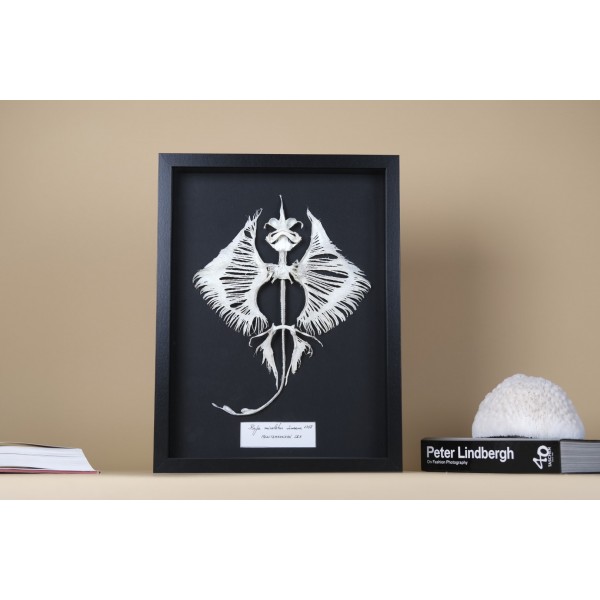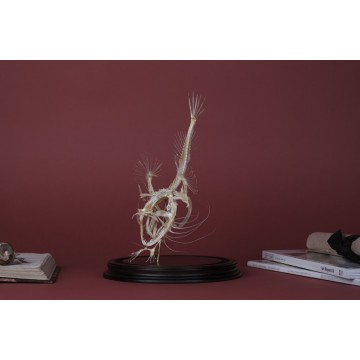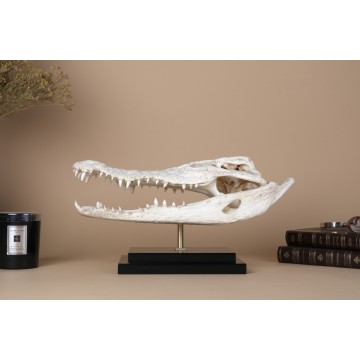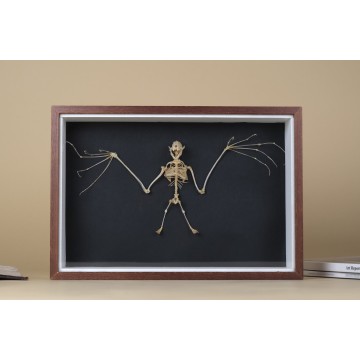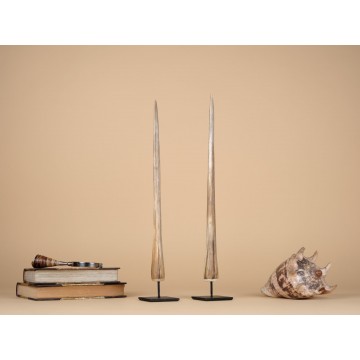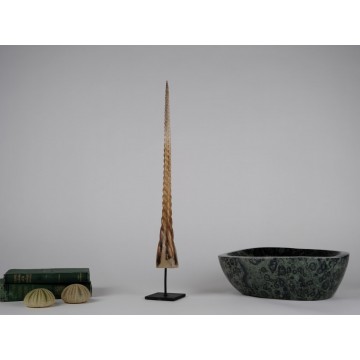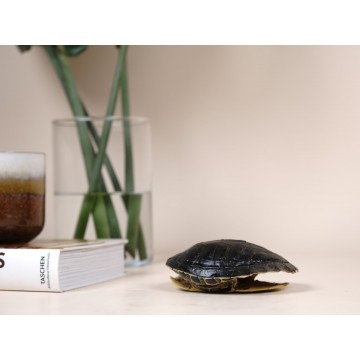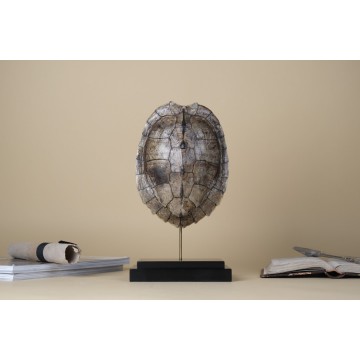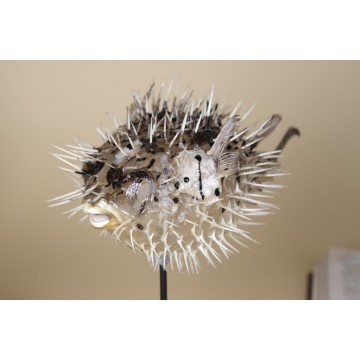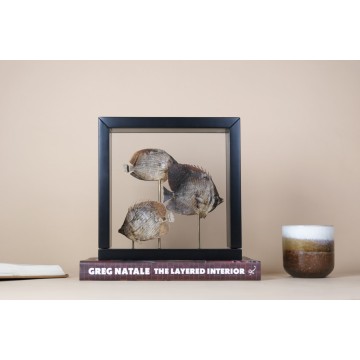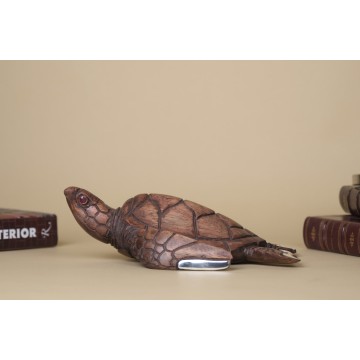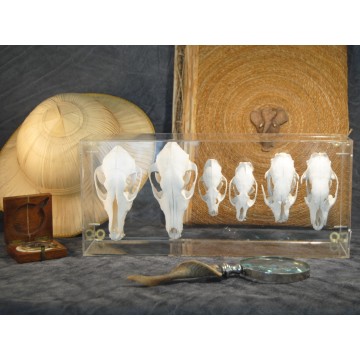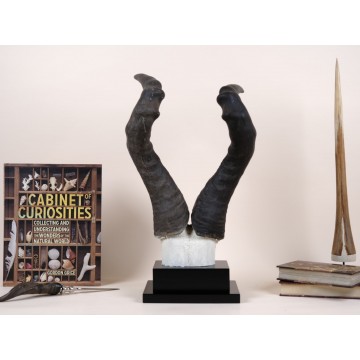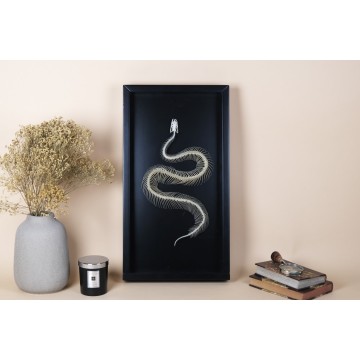Anglerfish Glass dome
The Anglerfish, scientifically known as Lophius piscatorius and commonly referred to as the European angler or common monkfish, belongs to the family Lophiidae. This unique species inhabits coastal waters spanning from the Barents Sea to the Strait of Gibraltar, encompassing regions such as the Mediterranean and the Black Sea. Notably, within certain areas of its range, such as the Irish Sea, the European angler supports a significant commercial fishery.
This exquisite taxidermy specimen showcases the intricate details of the Anglerfish, including its distinctive two rows of teeth and elusive nature. Mounted within a glass dome, this display piece serves as a captivating tribute to the enigmatic beauty of this remarkable marine species.

